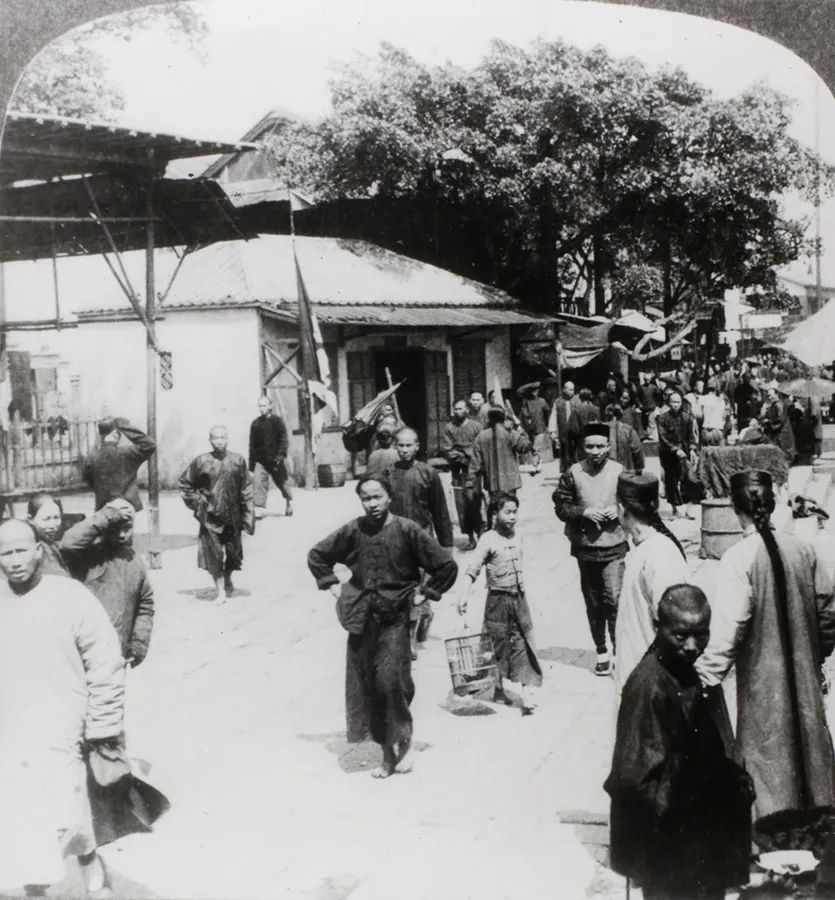
Street scene, Canton (广州), 1900. Image courtesy of Billie Love Historical Collection and Historical Photographs of China, University of Bristol (www.hpcbristol.net).  广州街头络绎不绝的行人,摄于1900年。
广州街头络绎不绝的行人,摄于1900年。

In the previous article, we've explored some landmark buildings of Guangzhou in the late Qing Dynasty through the historical photographs collected in the 'Historical Photographs of China' project of the University of Bristol, England. (Click the link here: Explore GZ in historical photos)
在英国布里斯托大学的“中国历史老照片”项目中,除了大量记录晚清至民国时期广州的城市风貌、繁华商贸等珍贵老照片之外,还难得地记录了广州普通老百姓的真实面貌,为19世纪中后期的广州留下了极有价值的人文影像遗存。
Today, let's turn our eyes to photos of people and take a look at what Cantonese people looked like in the late Qing Dynasty.
今天,我们继续走进“中国历史老照片”项目收藏照片,看看晚清时期西方摄影家们镜头下的老广们到底长什么样。

Officials 广州官员
During the Qing Dynasty, Guangzhou was the administration center of Guangzhou Fu(prefecture), where offices of civil and military officials, including the office of Governor General of Guangdong and Guangxi, were based.
清朝统治时期,广州既是省城,也是南海知县、番禺知县、广州知府、广东学政、广东按察使、广东布政使、广东巡抚、广州将军、广东提督等文武官吏的办公场所,两广总督衙署也设在广州。
The man in the photo below was Ye Mingchen, Governor General of Guangdong and Guangxi. This photo, which was taken after Ye had been captured by the British, is probably the earliest photograph of Chinese official in the Qing Dynasty. On December 28, 1857, Ye was captured by the Anglo-French Allied Force and then was transported to Calcutta, India, where he refused to eat and died of hunger in 1859.
下面这张照片为清朝咸丰时期的两广总督叶名琛。1857年12月28日,英法联军进犯广州,广州次日失陷,叶名琛忠于职守“不走不降”,最终被俘。照片是叶名琛被俘后所摄,可能是大清朝官员中最早的肖像照片。1859年,叶名琛被英军押至印度加尔各答,在监狱中不吃英军之粟,绝食而死。
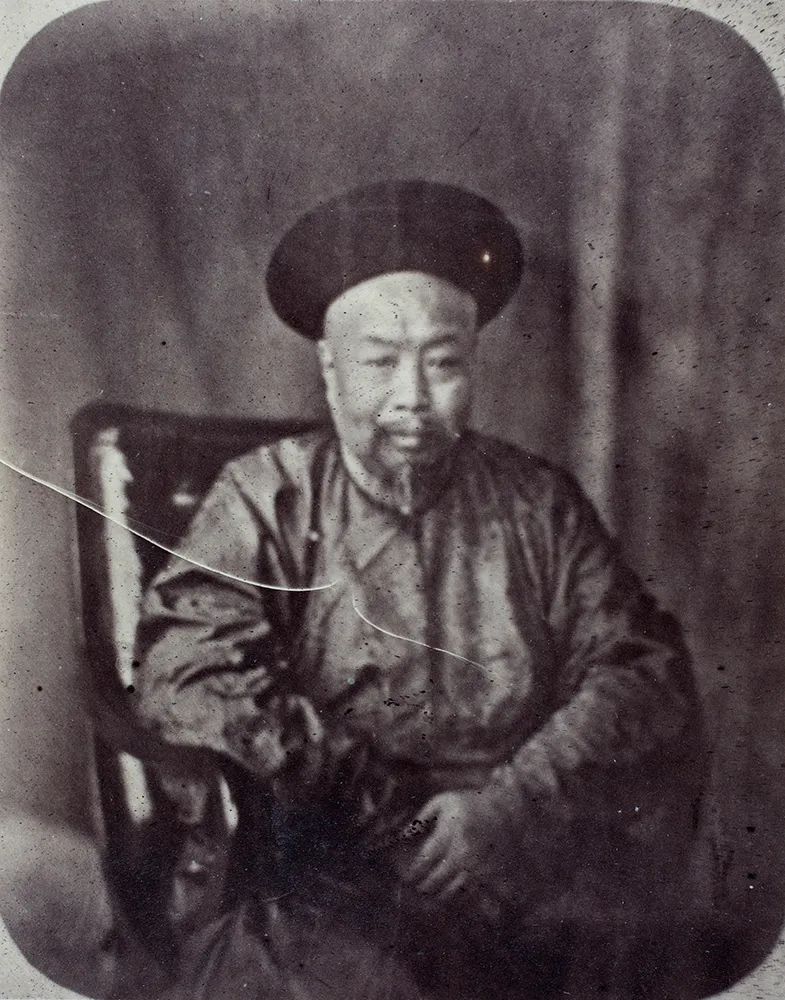
Ye Mingchen, Governor General of Guangdong and Guangxi, 1858-1859. Image courtesy of Vacher-Hilditch Collection and Historical Photographs of China, University of Bristol (www.hpcbristol.net). 清朝咸丰朝体仁阁大学士、两广总督,一品大员叶名琛,摄于1858-1859年间。
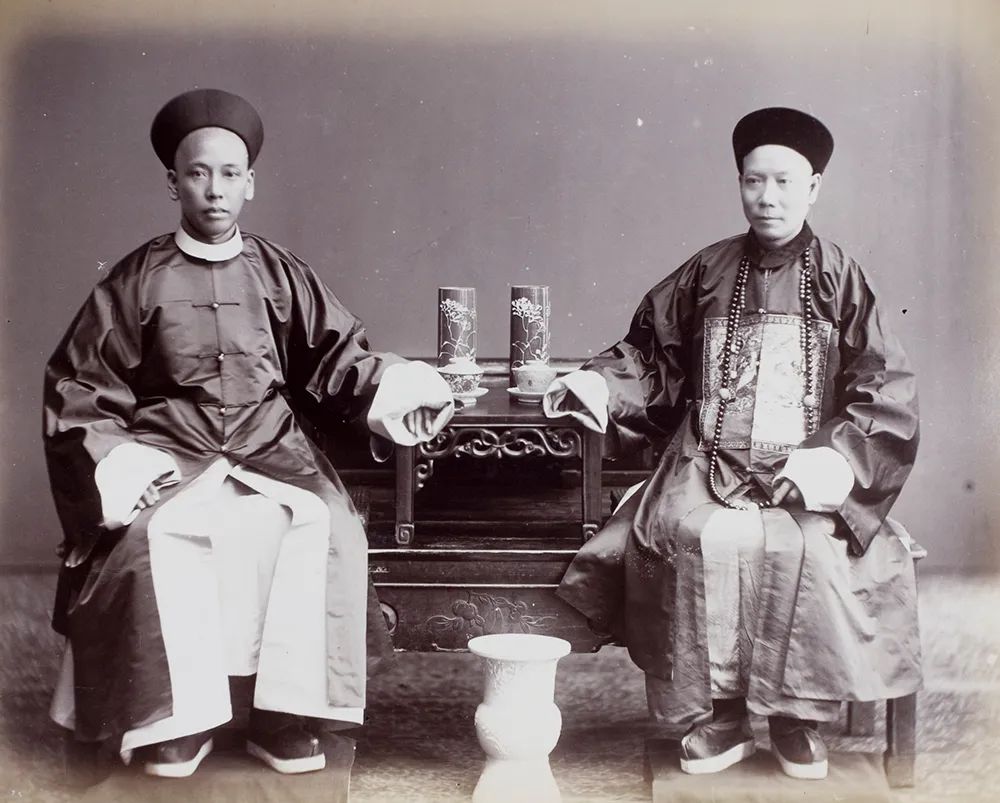
Mandarins, Canton, 1890-1900. Image courtesy of University of Bristol Library Collection and Historical Photographs of China, University of Bristol (www.hpcbristol.net). 广州官员,约摄于1890-1900年间。

'A mandarin or merchant, and his family', Canton, 1860-1864. Image courtesy of University of Bristol Library Collection and Historical Photographs of China, University of Bristol (www.hpcbristol.net). 广州官员全家福,约摄于1860-1864年间。

Wealthy merchants 富商
There were more than 5,000 shops and stores specializing in different kinds of export goods such as porcelain, silk and painting in Guangzhou Thirteen Hongs in the Qing period, which gave birth to a great number of rich merchants in the city.
在清代,广州十三行一带有5000余家专营外销商品的店铺,涉及漆器、银器、瓷器、纺织、绘画、雕刻等各个行业。
The merchants were engaged in various sectors, and the intermediaries who acted as a link between buyers and sellers were the most famous.
在这些商人中,以牙商最为著名。所谓牙商,是指在城市和乡村的市场中为买卖双方说合交易,并从中抽取佣金的居间商人,亦称牙人。
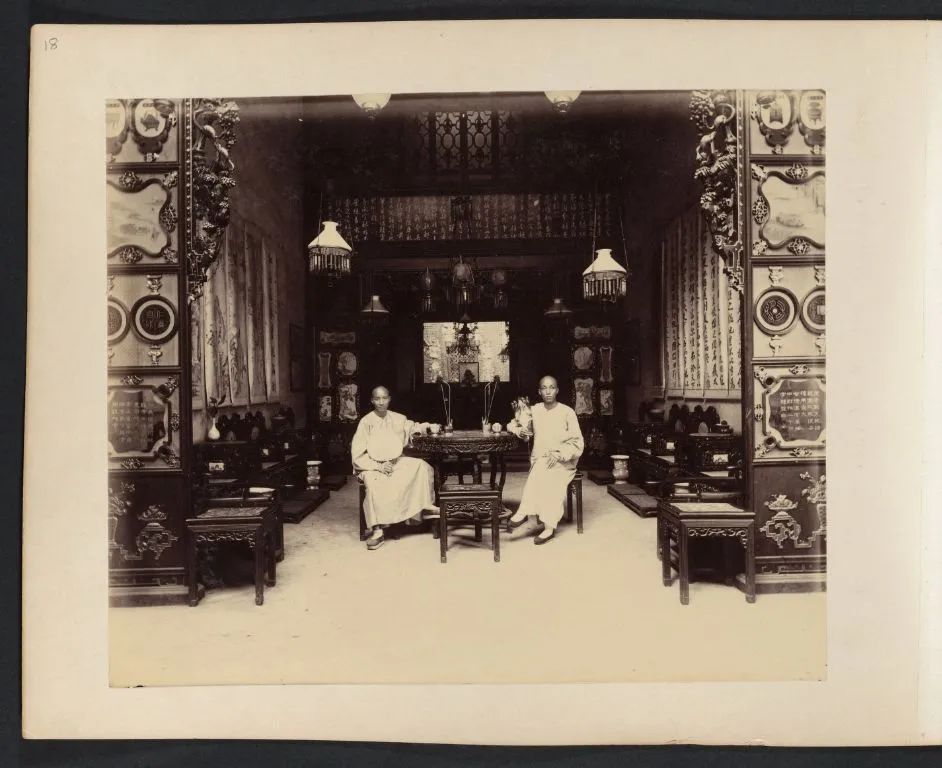
Two young Chinese men sitting at table in a room with carved wood furniture and partitions, Canton, 1893. Image courtesy of Edward Bangs Drew Collection and Historical Photographs of China, University of Bristol (www.hpcbristol.net). 广州两年轻男子合影,照片中的客厅非常豪华,还有清式风格的实木桌椅、雕刻精美的门窗、若隐若现的书画……可见他们有着雄厚的经济实力和深厚的文化品味,摄于1893年。
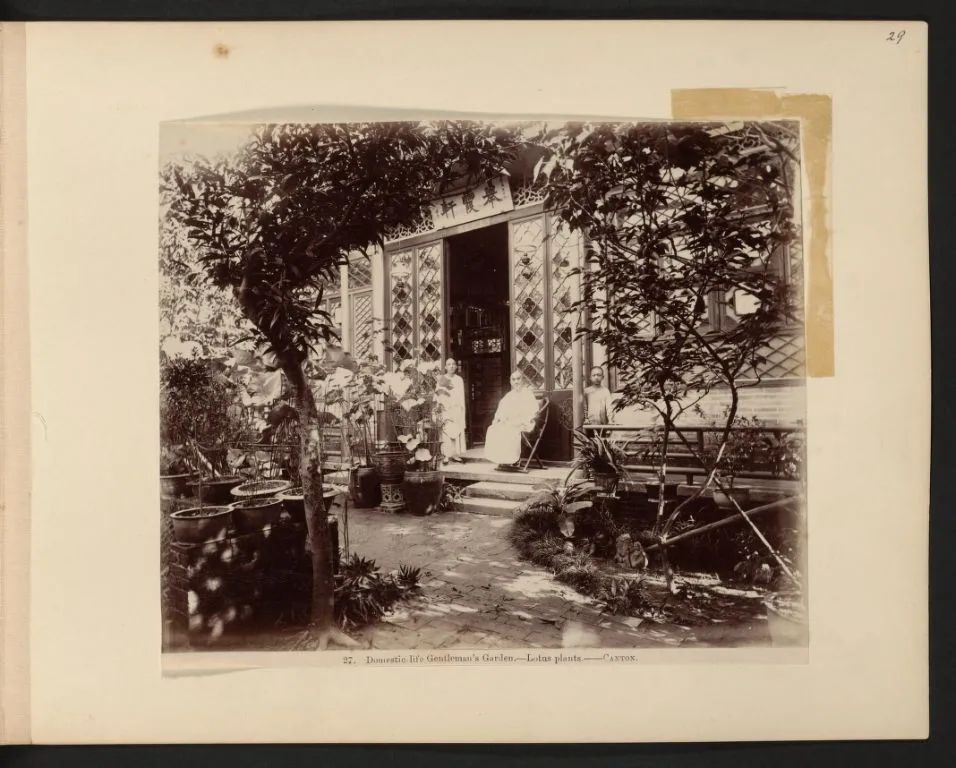
Domestic-life gentlemen's garden, lotus plants, Canton, 1886. Image courtesy of Edward Bangs Drew Collection and Historical Photographs of China, University of Bristol (www.hpcbristol.net).  广州有钱人的花园,摄于1886年。这位绅士身后的房屋命名为“举霞轩”,来自“轩然霞举”的典故。成语出自南朝·宋·刘义庆《世说新语·容止》:“海西时,诸公每朝,朝堂犹暗;唯令稽王来,轩轩如朝霞举。”这是形容人俊美潇洒。
广州有钱人的花园,摄于1886年。这位绅士身后的房屋命名为“举霞轩”,来自“轩然霞举”的典故。成语出自南朝·宋·刘义庆《世说新语·容止》:“海西时,诸公每朝,朝堂犹暗;唯令稽王来,轩轩如朝霞举。”这是形容人俊美潇洒。
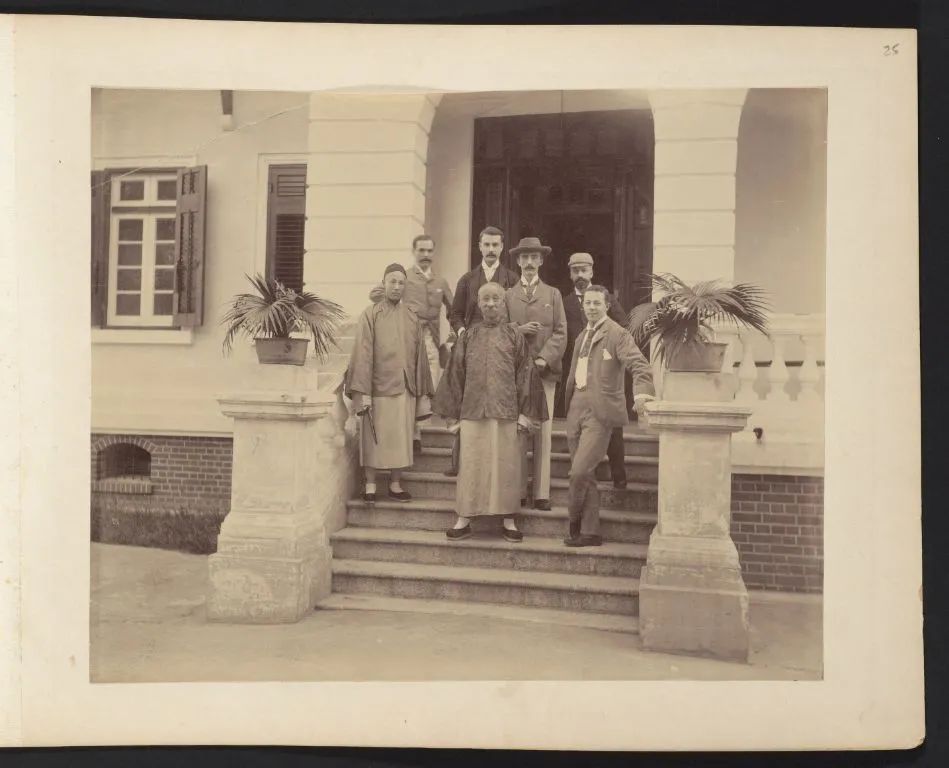
Two Chinese men in traditional dress posing with five foreigners on steps in front of a building in Canton, 1893. Image courtesy of Edward Bangs Drew Collection and Historical Photographs of China, University of Bristol (www.hpcbristol.net). 两广州男子和五个外国人合影,摄于1893年。两广州男子身穿清朝时期服饰,保留着清朝时期独特发型。

School children 中式学童
China's private tutorial system dates back to the days of Confucius, a scholar and educator who lived 2,500 years ago. Sishu schools, an old-style private school, were popular throughout China in the Qing Dynasty.
私塾是私学的一种,清代地方儒学有名无实,青少年真正读书受教育的场所,除义学外,一般都在地方或私人所办的学塾里。因此,清代学塾发达,遍布城乡。
The curricula of these schools and the age of pupils was not explicitly stipulated before the late 19th century.
塾师多为落第秀才或老童生,学生入学年龄不限。自五六岁至二十岁左右的都有,其中以十二三岁以下的居多。
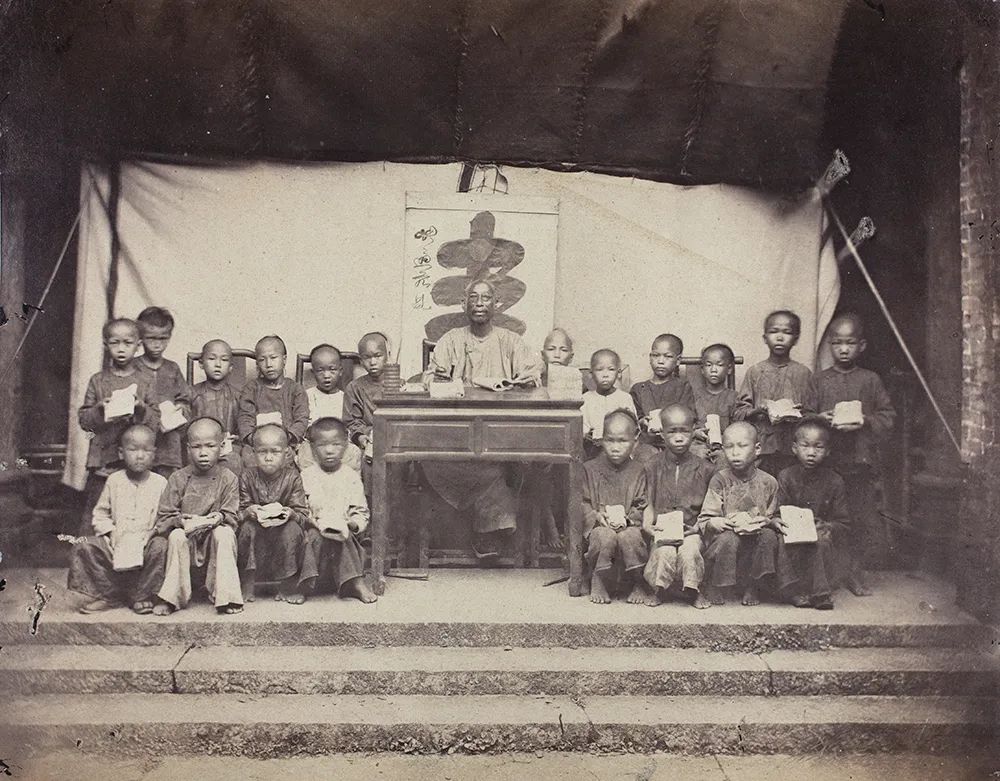
Chinese School, Canton, 1863. The photo shows the school children were all bared-footed. Image courtesy of Royal Hampshire Regiment Collection and Historical Photographs of China, University of Bristol (www.hpcbristol.net). 广州一所中式私塾,照片中坐着老师和一群学生们,学生们衣着简陋,赤脚,应来自贫苦家庭,摄于1863年。

Missionary school girls 教会女童
At the end of the Qing Dynasty, western churches entered Guangzhou and established schools exclusively for female students. More than 40 female missionary schools were set in Guangzhou between 1860 and 1907. Most of the girl students were born into wealthy families and were exposed to European and American culture at an earlier age.
清末,西方教会进入广州,并建立女学,专收教内女生,当时“各省女学堂未兴,惟上海、广东有之”。1860年到1907年,广州大约出现了约40所女子教会学校。这些女孩子大多出生于富裕之家,更早接受欧美文化的熏染。
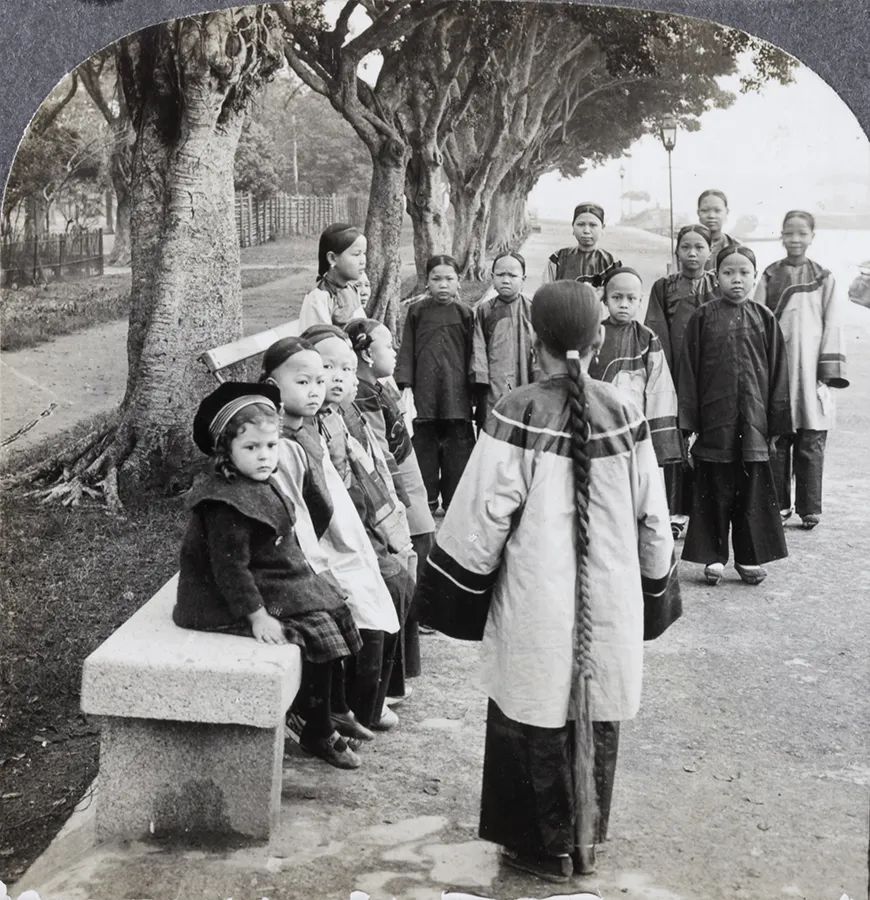
Mission children with an American girl, Respondentia Walk, Shameen, Canton, 1900 . Image courtesy of Billie Love Historical Collection and Historical Photographs of China, University of Bristol (www.hpcbristol.net). 广州沙面岛,教会女童和一个美国小女孩,摄于1900年。

Commoners 普通百姓

Cantonese men, 1919-1920. Image courtesy of Swire, G. Warren Collection and Historical Photographs of China, University of Bristol (www.hpcbristol.net). 广州老百姓,衣着简朴,脸上带着好奇的表情,摄于1919-1920年间。
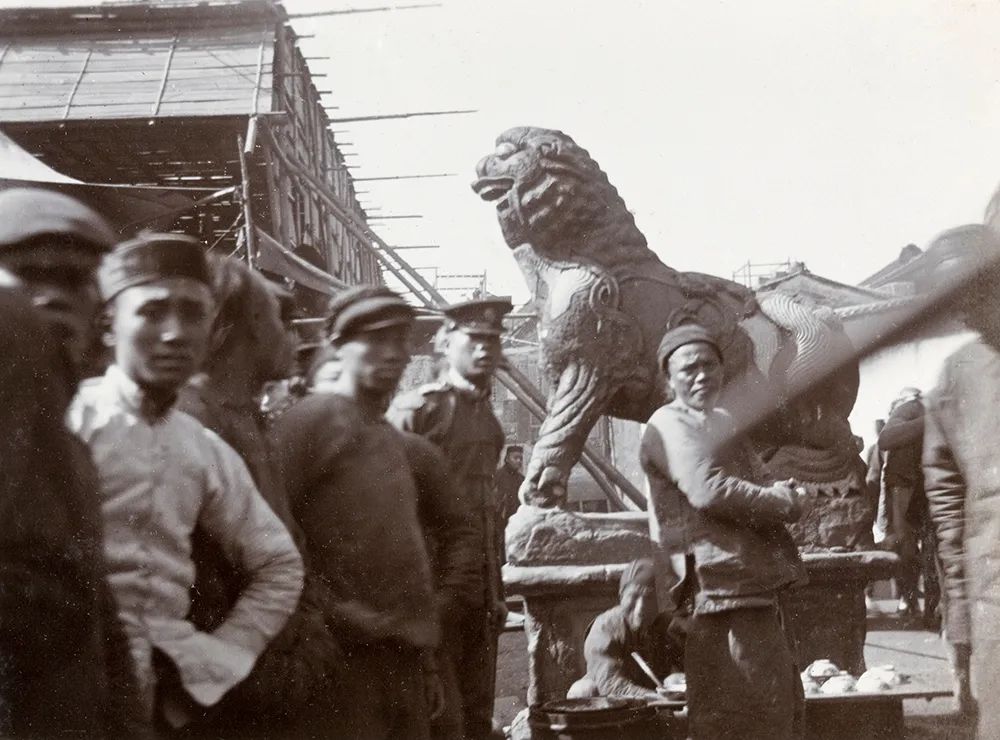
Lion sculpture in front of the Treasury, East Street, Canton, 1910. Image courtesy of Rue, Henry Collection and Historical Photographs of China, University of Bristol (www.hpcbristol.net). 广州金库前的石狮子和民众们,图中还能见到一位身穿警察制服的男子,摄于1910年。
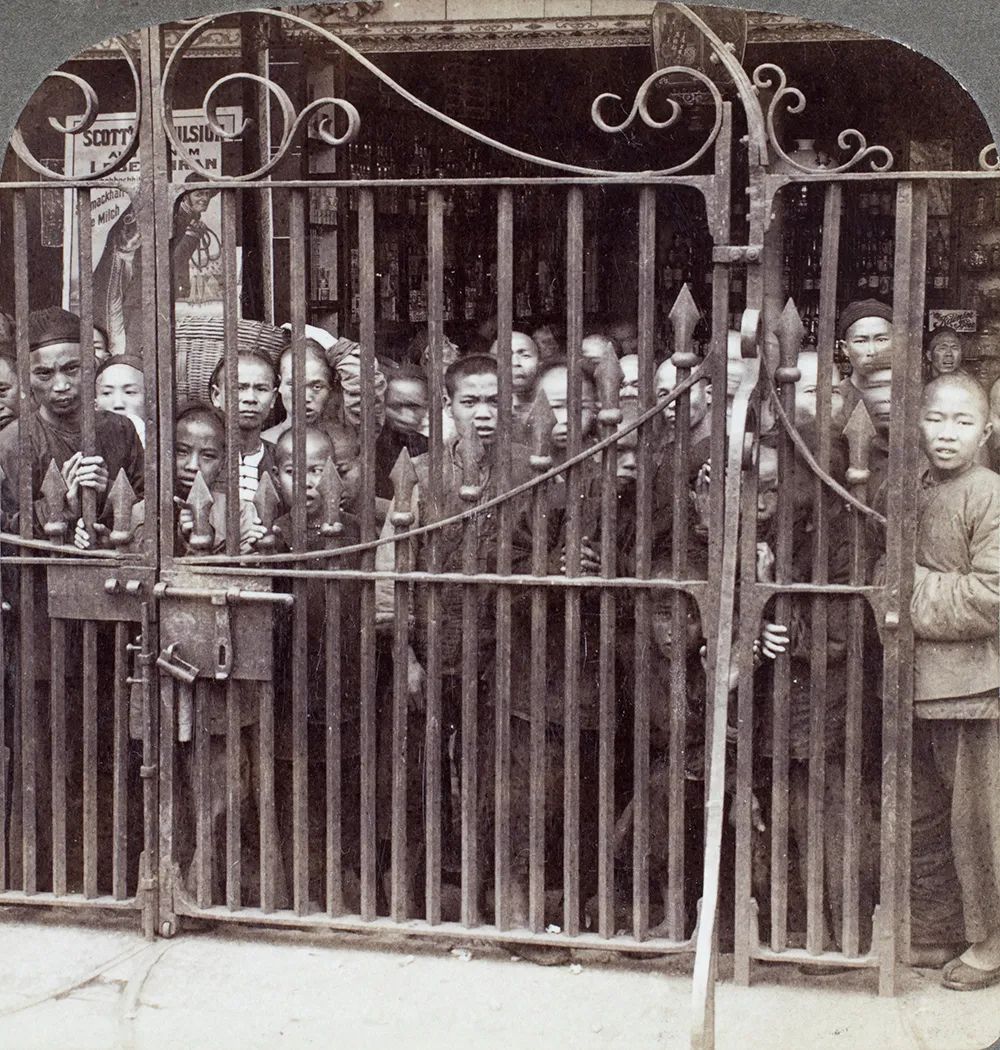
Cantonese looking through a gate, The English Bridge, Guangzhou, 1900. Image courtesy of Carstairs, Jamie Collection and Historical Photographs of China, University of Bristol (www.hpcbristol.net). 沙面英格兰桥(今沙面西桥)处站在围栏外围观的广州人,摄于1900年。
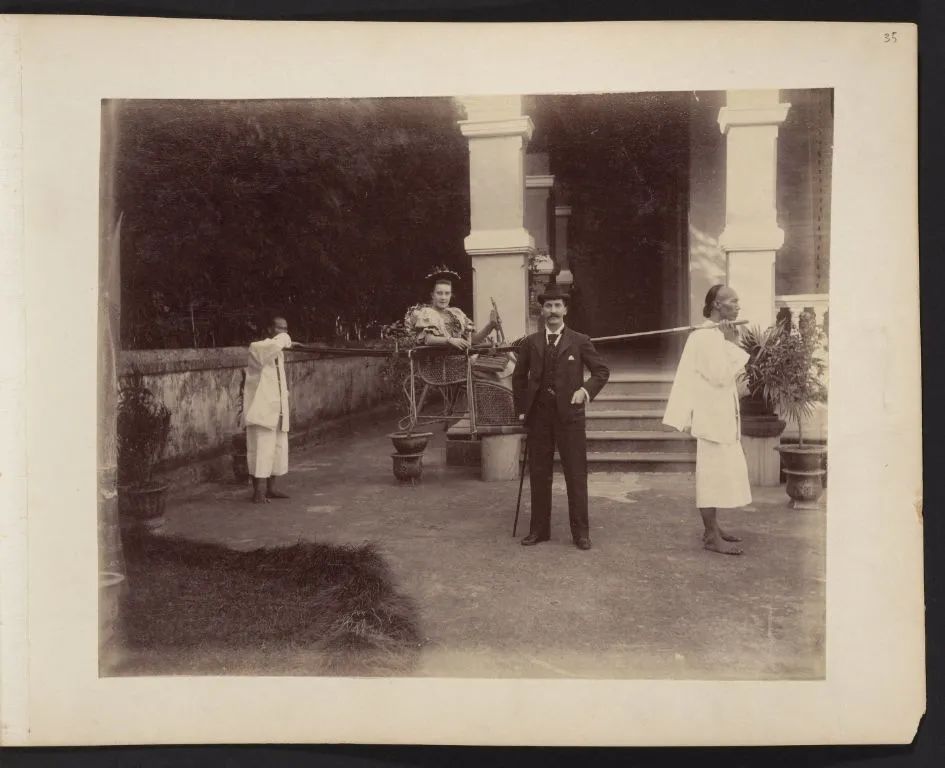
Unidentified man standing in front of woman sitting in sedan chair with two Chinese bearers, Canton, 1893. Image courtesy of Edward Bangs Drew Collection and Historical Photographs of China, University of Bristol (www.hpcbristol.net). 广州,两位抬轿椅的男子,轿椅上坐着一位外国女士,还有一名外国男士站立在最前面,摄于1893年。
Author: Yuan
Supervisor: Lv Yun
Editor: Lv Yun
Source: GZ-Maritimesilkroad (丝路云帆Silu Yunfan), official Wechat account of City Alliance for the Preservation and world Heritage Inscription of Maritime Silk Road Heritage
Courtesy: Historical Photographs of China, University of Bristol (www.hpcbristol.net)
Guangzhou Municipal Bureau of Culture, Radio, Film and Tourism